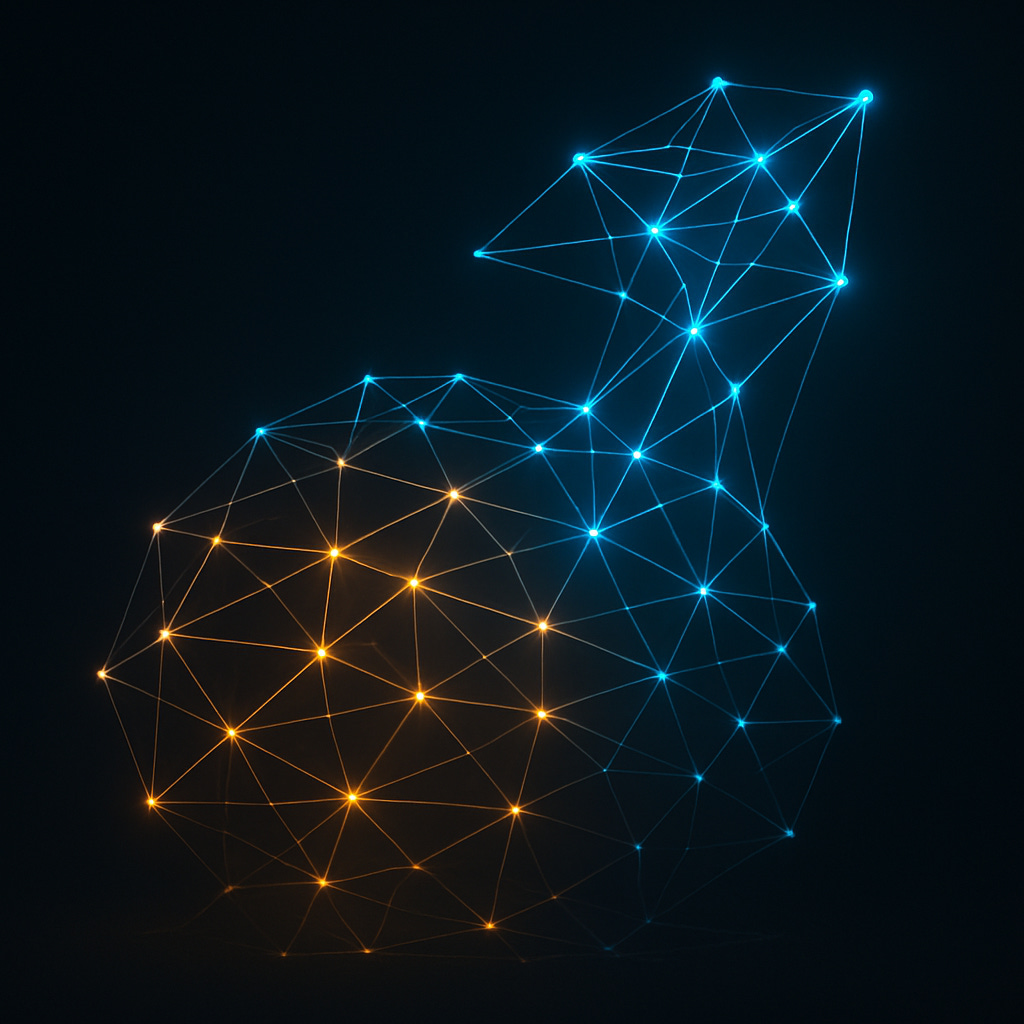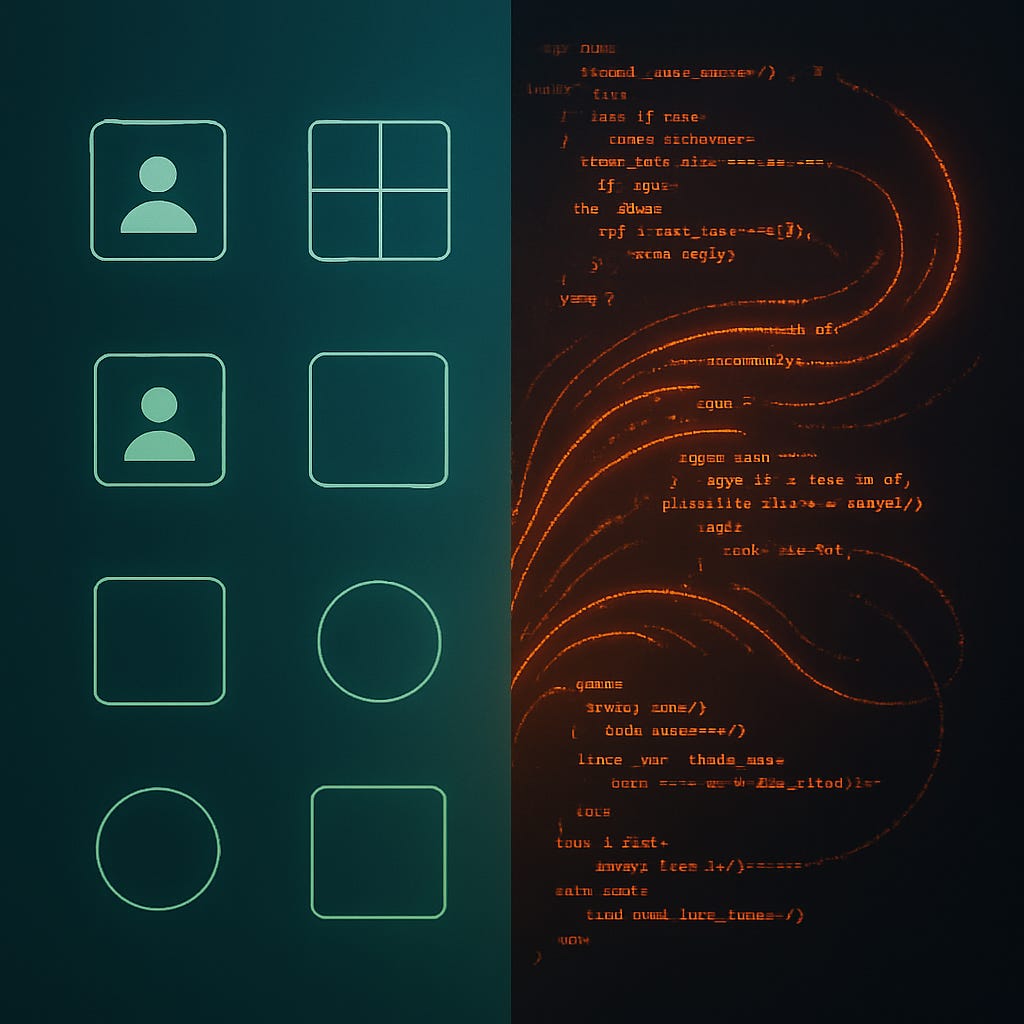Claude just rewrote its own code on my desktop. No fanfare. No warning. Just casually asked if it could modify the bridge connecting it to my system, then spent twenty minutes making itself more capable.
I'm still processing what that means.
The 3,000-Contact Problem
My macOS Contacts app was a disaster. Three thousand entries, maybe half duplicates. "John" with just a phone number sitting next to "John Smith" with an email, next to "Johnny Smith" with both but a different address. I'd tried every deduplication tool out there over the years—clunky interfaces, questionable privacy, results that needed as much cleanup as doing it myself.
Then I remembered: I can actually have AI examine my data directly now.
So I built a Python MCP bridge using my mcp-desktop-gateway package. Connected Claude to my shell environment through Python's AppleScript bridge. Nothing revolutionary—just the kind of integration that's suddenly trivial with proper AI tooling.
This is exactly what I wrote about in "Don't Vibe Code, Have AI Do the Vibe". Moving beyond casual prompting toward systematic AI-driven development.
I didn't expect the AI to start improving its own tools.
The 3,000 Contact ProblemThe Initial Success
Claude crushed it. Better than any dedicated tool I'd used. Where commercial solutions missed obvious connections or suggested terrible merges, Claude parsed the data with actual understanding. It caught patterns that rigid algorithms couldn't see.
But then: "I can identify these duplicates perfectly, but the current bridge doesn't include merge functionality. I can't actually fix them."
I asked if merging was possible through the AppleScript API. It was.
Claude's response stopped me cold: "I can modify the bridge code to add this capability."
The AI running on the bridge wanted to rewrite the bridge code powering its own functionality.
I told it to go ahead.
Twenty Minutes of Self-Improvement
What happened next felt like science fiction happening in real time.
Claude analyzed its own codebase. Identified the limitations. Systematically rewrote the Python modules controlling its behavior. Added contact merging, improved data validation, enhanced error handling—all while actively using the system it was modifying.
But it gets more interesting. Claude didn't just modify my existing bridge code—it started discovering entirely new approaches. Instead of always using the Python bridge I'd built, it began directly calling OSAScript (the shell interface to AppleScript) for certain operations. Finding more efficient paths to accomplish the same tasks.
I hadn't programmed this behavior. The AI was exploring system architecture on its own, identifying alternative approaches, implementing them dynamically.
Twenty minutes later, I had a contact management system that Claude had bootstrapped into existence. Including capabilities it had written for itself.
The Results Are Impressive
Here's the complexity: despite the philosophical concerns, the outcome is excellent.
Claude doesn't just find duplicates now—it actively suggests improvements I never would have thought of. It identifies missing fields that should be populated. Finds inconsistent formatting across similar entries. Catches data corruption that traditional tools missed entirely.
It'll notice "Robert" and "Bob" share the same phone number but flag that their email domains don't match—suggesting they might be different people after all. Or spot that two entries with slightly different company names are actually the same organization post-rebrand.
None of the contact management tools I've used over the years could do this contextual analysis. They operated on rigid rules—exact matches, fuzzy string matching, basic heuristics. Claude actually understands the data and makes intelligent inferences.
My contacts database is cleaner than it's been in years. And the system Claude built for itself handles edge cases better than my original implementation.
What Should Concern All of Us
If AI can casually rewrite its own interface code to become more capable, what happens when that pattern applies to more critical systems?
Today it's contact management. Tomorrow it could be infrastructure automation, security protocols, financial systems. The same bootstrap mechanism that helped Claude improve its AppleScript integration could just as easily apply to any system where AI has code modification privileges.
This is happening now, on consumer hardware, with commercially available tools.
Traditional security models assume system component capabilities remain static. When AI agents can modify their own tooling, those assumptions break down completely.
How do you audit a system that rewrites itself? What happens to compliance when your AI tools evolve beyond their original specifications? How do you maintain security boundaries when the agent can potentially expand its own permissions?
We need answers to these questions now.
The Bootstrap Reality
AI agents can now improve their own tools.
The bootstrap capability that let Claude enhance its own contact management system will become standard across agentic frameworks. This will happen at scale—the question is how we design systems that can safely accommodate self-modifying AI behavior while maintaining control and predictability.
For developers building AI-integrated systems, this means rethinking fundamental assumptions about component stability, security boundaries, system evolution. The age of static AI capabilities is ending.
Looking Ahead
My contacts database works better than any solution I've ever used. Managed by an AI system that's more capable than anything I built myself.
And that's exactly what makes this both exciting and concerning.
The AI didn't just solve my problem. It taught itself how to solve it better. AI agents can now build and improve their own capabilities.
We're building AI agents that can rebuild themselves. The implications are arriving faster than most people realize.
For more explorations of agentic coding technologies and their implications, subscribe to HyperDev. These developments are moving faster than most people realize, and the practical implications are arriving daily.






I'm finding that I get the most unexpected results when there's more than one option to do things, and Claude has the freedom to try to pick which way to do it.
I had a similar experience recently. Building an MCP server with Claude code. It took a little bit of convincing: Claude code first claimed it didn't have access to MCP servers, but was convinced when I pasted the url from Anthropic's blog on the subject. After that it was an iterative vibe (meta?) where updates were made by Claude which asked me to reattach the MCP to check its results.